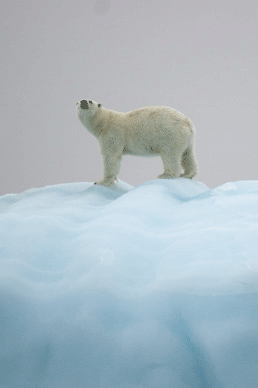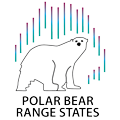 Photo credit: J. Aars / NPIThe polar bear (Ursus maritimus) is the Arctic species exposed to some of the highest levels of biomagnifying contaminants. These contaminants include halogenated organic compounds, which originate from industrial and agricultural activities, and mercury. Legacy persistent organic pollutants (POPs) are still the main compounds, which polar bears accumulate and are exposed to. Contaminant levels vary widely between subpopulations and among compounds. Contaminants that polar bears are exposed to, originate mainly from long-range transport. Although local pollution sources also exist, their contribution to larger scale contamination in polar bears likely has been minor.
Photo credit: J. Aars / NPIThe polar bear (Ursus maritimus) is the Arctic species exposed to some of the highest levels of biomagnifying contaminants. These contaminants include halogenated organic compounds, which originate from industrial and agricultural activities, and mercury. Legacy persistent organic pollutants (POPs) are still the main compounds, which polar bears accumulate and are exposed to. Contaminant levels vary widely between subpopulations and among compounds. Contaminants that polar bears are exposed to, originate mainly from long-range transport. Although local pollution sources also exist, their contribution to larger scale contamination in polar bears likely has been minor.
After climate-driven loss and fragmentation of sea-ice habitat, contaminant exposure is considered to be one of the most significant threats to polar bears. Numerous studies have investigated potential adverse health effects of contaminants in polar bears using different approaches, and have indicated that contaminant exposures may alter circulating levels of thyroid hormones as well as lipid metabolism in polar bears. Other studies have shown that the immune system and neurochemistry are potentially affected by contaminant exposure. The state of knowledge on exposure, fate and potential health effects of contaminants in polar bears from the circumpolar Arctic have been summarized, however, our understanding of population level risks and effects of contaminants in polar bears is still very limited, and subject to further study. For more information, click here to view the 2019 review by Routti et al.
To download a complete report detailing the state of knowledge regarding contaminants in polar bears with recommendations for future monitoring and research click here
